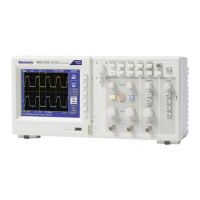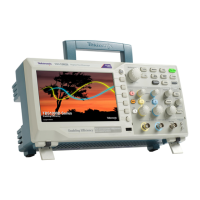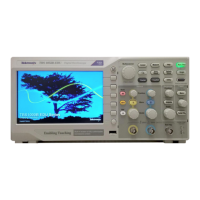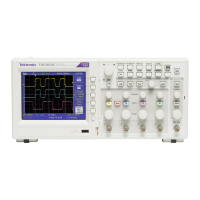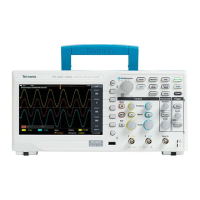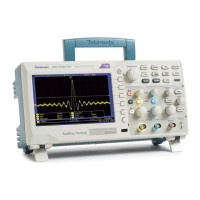Separating the signal from
noise
Now you want to analyze the signal shape and ignore the noise. To reduce
random noise in the oscilloscope display, follow these steps:
1. Push the Acquire button to see the Acquire Menu.
2. Push the Average option button.
3. Turn the Multipurpose knob to highlight different numbers of averages from
the pop-up menu. As you push the knob to select a different number, you can
see the effects of varying the number of running averages on the waveform
display.
Averaging reduces random noise and makes it easier to see detail in a signal. In
the example below, a ring shows on the rising and falling edges of the signal
when the noise is removed.
Capturing a Single-Shot signal
The reliability of a reed relay in a piece of equipment has been poor and you need
to investigate the problem. You suspect that the relay contacts arc when the relay
opens. The fastest that you can open and close the relay is about once per minute,
so you need to capture the voltage across the relay as a single-shot acquisition.
To set up for a single-shot acquisition, follow these steps:
1. Turn the Vertical Scale (volts/division) and Horizontal Scale (seconds/
division) knobs to the appropriate ranges for the signal you expect to see.
2. Push the Acquire button to see the Acquire Menu.
3. Push the Peak Detect option button.
4. Push the Trigger Menu button to see the Trigger Menu.
5. Push Slope.
6. Turn the Multipurpose knob to highlight Rising from the pop-out menu.
Push the knob to select the choice
Application examples
TBS1000B and TBS1000B-EDU Series Oscilloscopes User Manual 39

